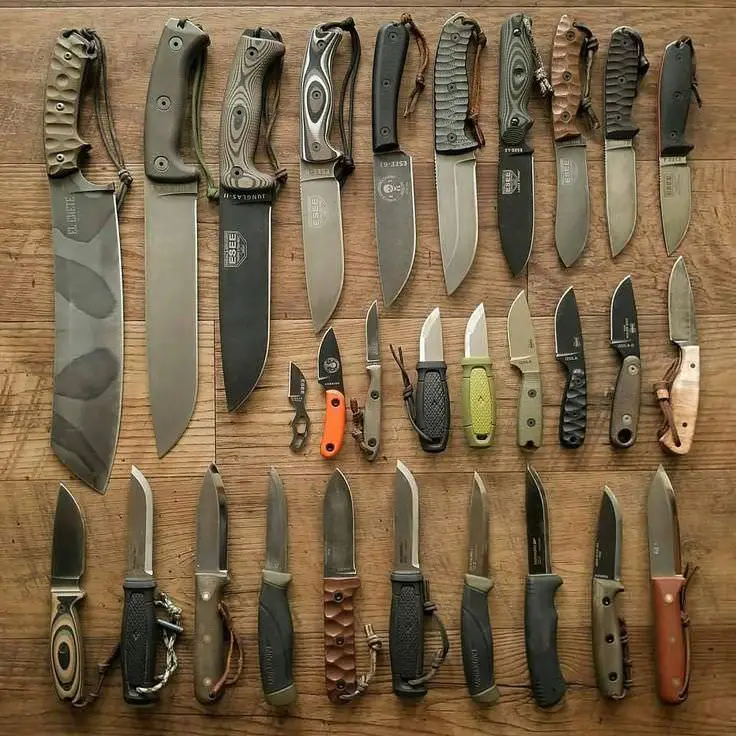A lot of people nowadays are considering carrying a bug-out bag for emergencies. This bag should hold anything that can help you survive in the case of a disaster. The concept is similar to that of the military’s survival kits. But here, you’ll be the one filling it with supplies.
That’s why you should know how to choose your gear wisely. There are a bunch of supplies to get in that bag, but that’s a story for another day. In this article, we’ll discuss how you can choose a suitable knife for a bug-out bag.
1. Consider Your Surrounding Environment
Knowing what environment you may get stuck in will help you choose your knife correctly. For example, if you’ll be keeping your bug-out bag in your car, you’ll likely be in an urban area when you need the knife. On the other hand, if you’re taking your survival bag on a trip to the woods, you’ll need a suitable knife for that. Check out this article for finding the best knife for trekking.
While you can use any kind of knife in city streets, the same doesn’t go for woods. You may need a skinning knife for that. Who knows when you’ll need to skin an animal?
2. Bigger Isn’t Always Better
Bigger knives look tempting, and the knowledge that you’re possessing a large weapon can give you confidence and a sense of safety in emergencies. However, that doesn’t mean a bigger knife will protect you better than a small one. Bear in mind that you can handle a small knife better, and it won’t add weight to your bug-out bag.
A swiss army knife, for example, is compact-sized. Yet, it’s highly useful, and it’s proven to come in handy in difficult situations.
3. Go for a Fixed-Blade Knife
I know a folding utility knife is tempting to own, but there are more downsides to it than you think.
A folding knife will take less space, but it’s not as strong as a fixed blade. Take it as a rule: folding parts increase the chance of breaking. And you won’t have the time to fix a knife in an emergency situation. You may choose a good quality fixed survival knife from here.
As for the room, if you don’t have much space for a fixed blade, you can strap it on the front of your bag. The downsides of a fixed knife can be dealt with, as opposed to a folding knife. All that being said, if you feel safer with a foldable blade, get one that you trust with your life. It’s also preferred to have a lockable mechanism for your safety.
4. Choose the Blade’s Material Wisely
Blades are either made of stainless steel or carbon steel, and we’re not getting into this argument right now. People have been arguing about the two since forever, and no one seems to reach a definitive opinion about it.
Carbon is sharper than stainless steel, and it’s much harder. That being said, it’s more brittle than stainless steel, so it can chip easily. Additionally, it’s prone to rust.
On the other hand, stainless steel will keep its sharp edge for a longer time, and it won’t rust that easily. At the same time, it may get deformed because it’s a springy material.
We recommend carbon steel because it’s easier to sharpen if its edge blunts out. Plus, it’s harder than stainless steel, so it’ll absorb impact better. You don’t want to end up with a bent knife in the middle of your trip.
5. Consider the Knife’s Maintenance
You won’t only pack your knife in your bug-out bag, but you should also consider its maintenance tools. You may need to sharpen your knife, so make sure to carry the best portable pocket knife sharpener or a ceramic sharpening rod. If you don’t have the space for either, you ought to learn new ways to sharpen a knife.
Keep in mind that a blunt knife is more dangerous on the user than a sharp one. It’ll require more cutting power, which may yield unpleasant results if you make the wrong move. That’s why you should be ready to sharpen it anytime you need to.
If you have a foldable knife or a Swiss knife, you should carry a knife lube or oil. It’ll come in handy if you hear a squeak, and it’ll also protect the knife from corrosion if you apply it after cleaning.
6. Don’t Forget About the Knife’s Edge
There are three different types of blade edges: combo, smooth, and serrated. Serrated edges have sharp teeth, which makes them perfect for cutting through wood. They’re the closest thing to a saw. These knives have limited use, so only buy them if you expect to cut through hard materials.
Meanwhile, you can use smooth knives for nearly anything. The only downside is that they get blunt after a while. But if you have your sharpener, you won’t have to worry.
We believe combo knives are the best option for bug-out bags. These knives start smooth and end with teeth near the handle. They are highly versatile and have unlimited uses, which should be your top priority.
Final Thoughts
The knife is one of the essential parts of your bug-out bag; that’s why you should pay attention when you’re buying it. When you do so, keep it far away from your daily usage because you’ll be tempted to use it. You’ll want your knife to be sharp and unused when you need it; you’ll thank us later for that tip.
We hope we helped you get an idea of what you need. Good luck preparing that bug-out bag of yours!

